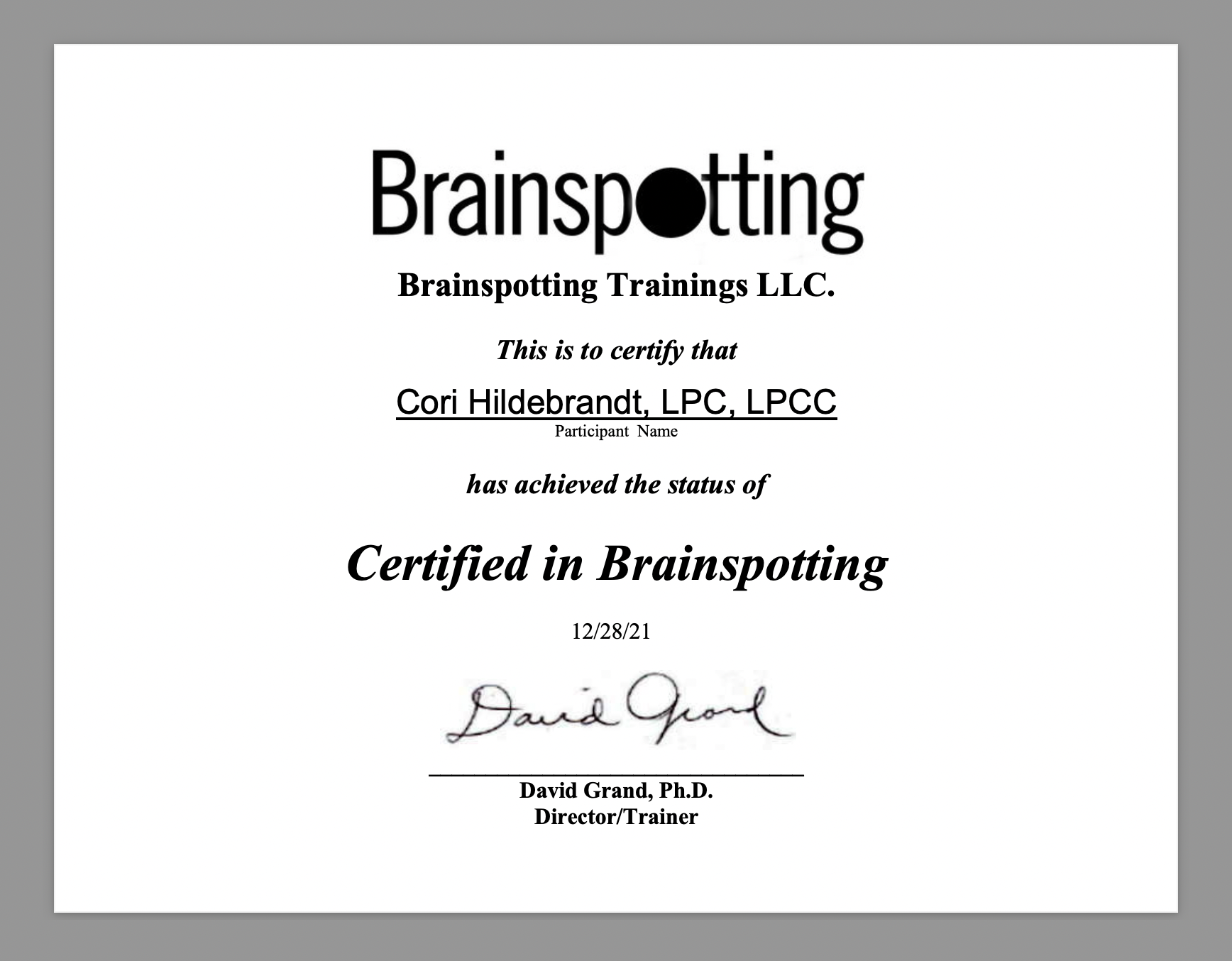Blog

Certification in Brainspotting = ACHIEVED!
After several months of training, practice, and consultation, I am proud to announce that I have been granted my CERTIFICATION IN BRAINSPOTTING!
I am committed to ongoing learning and growth, and to expanding my therapeutic abilities and offerings, constantly evolving to be my best, and to support clients better on their healing journeys.

Phobias and the Power of Brainspotting!
I often hear people say things like, “I hate snakes, I don’t like heights, I can’t fly, the sight of blood makes me queasy,” and typically people seem to accept those self-limiting beliefs and make choices to avoid those feared things.
If you’re one of those people and you might like to fly somewhere without panic, or not freak out over a snake, then BRAINSPOTTING could help!

The Power of BRAINSPOTTING: Noted Outcomes!
BRAINSPOTTING is a promising therapy for most types of symptoms such as sleep disturbance, low mood, anxiety, irritability, negative beliefs, interpersonal issues, trauma and stress responses, and chronic pain. Many clients notice shifts and sense relief even during their first Brainspotting session.

THE BRAINSPOTTING EXPERIENCE: What Clients Report and What’s Observed in Session!
What happens for clients during BRAINSPOTTING is fascinating! Many have reflexive and releasing type responses like yawning, blinking, coughing, hot/cold sensations, crying, tingling, vivid images, or reviewing experiences. At the end of sessions, most clients report things like feeling deeply relaxed, fatigued, more focused, having new insight around their issue, and reduction in symptoms.

Video Alert! Cori Speaking on BRAINSPOTTING!
BRAINSPOTTING is a body-brain based relational therapy that uses where you look to access stored material in your subcortical brain. Accessing this stored material allows your own natural process to unfold, metabolizing and moving you towards a regulated, state of homeostasis.

What is BRAINSPOTTING?
BRAINSPOTTING is a body-brain based relational therapy that uses where you look to access stored material in your subcortical brain. Accessing this stored material allows your own natural process to unfold, metabolizing and moving you towards a regulated, state of homeostasis.

BEYOND TALK THERAPY: You Don’t Have to Talk About “It” to Heal “It!”
Talk therapy absolutely can be beneficial and uses our higher thinking brains. Yet as some point, talk therapy is limited because it is not able to access the lower parts of the brain where we hold stress and trauma responses. Talk therapy alone is often not enough to heal human issues.
In my practice, I offer three types of intervention that are able to access the lower brainstem and middle emotional brain to metabolize stressor and trauma responses: 1) Eye Movement Desensitization and Reprocessing Therapy (EMDR), 2) Brainspotting, and 3) free-form dance movement.